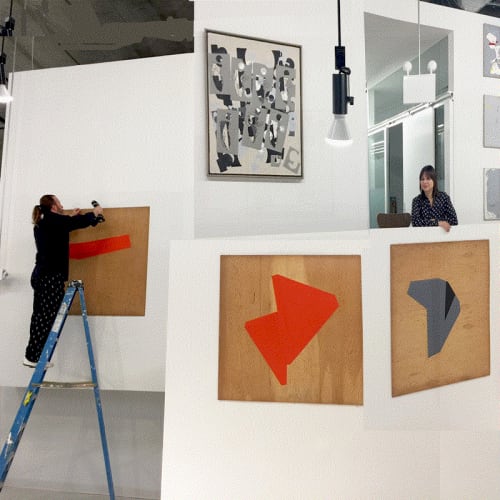Manhattan, August 26, 2016
Glynn Pogue interviews Judy Rifka about her 40+ year career as well as her retrospective at the Jean-Paul Najar Foundation in Dubai:
Glynn Pogue: Influential art critic Rene Ricard wrote that your single shapes on plywood were among the most important paintings of the ‘70s. “Every painter who saw them at the time recognized their influence," he noted. Why do you think that work elicited such passionate responses?
Judy Rifka: "I’ll tell you why. There has been a lot of talk about space in painting, and the art world tends to keep it formal. At times people get really into the postmodern dialogue, and then they don’t really give a damn about space. It becomes some vast conceptual idea. When I think about space, I have to think about how all paintings deal with space and try to find a way out of that. Malevich is very interesting because he really conceptualized modern painting in probably 1913, and he was talking about finding hyperspace, some other kind of connection. Hofmann later talked about it in terms of color and the ideas of push, pull and relational space. So now, when I’m painting, it’s the idea of making a mark and deciding where and how to make the other mark, and that goes back to dance and movement. It’s a decision to go somewhere. I’m here, and I’m going to go there. It becomes an emotional connection between an idea and putting your body where your mind is. So it’s all about the way things relate in that space, and I think about the way to make the actual form continue through that, kind of, wish space. So I take the paint, go from one point to another, and then it becomes a body. It’s the way a body creates itself or a pseudopod moves. So I create a form based on the space, that’s why there’s no space within that shape, because the space has turned to paint. Then I take these movements, which are generally two, sometimes three, and I have knotted them back and forth to create built-up space. Some people try to do that from the outside in, but that’s impossible, because you don’t know what the shape is going to look like. It’s like a convex hull in math. It’s a shape that’s created by a perimeter of shapes. I’m creating convex hulls that bloom back and forth over each other so that the space is eliminated. When I made those pieces, not many people understood them. But those ideas were important to me at the time. They still are."
The entire interview can be found here.


